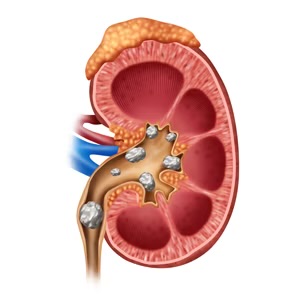Jan 12, 2019
Kevin R. O’Neill, MD, MS
Spine Surgeon
Most people experience back pain or neck pain at some point in their lives—and most cases are not an emergency. Bouts of spine-related pain can usually be managed at home with an over the counter (OTC) anti-inflammatory drug, OTC pain reliever or ice and heat. Seldom is spine surgery urgently needed, and most surgical procedures are elective. However, there are times when back or neck pain requires urgent medical attention. Here, you’ll learn about 6 potentially serious spinal conditions and symptoms you shouldn’t ignore.
First, a Review of Spine-Related Red Flag Warning Signs
Because back and neck pain are so common, you may downplay your symptoms. But if you develop any of the following emergency signs, you should see a doctor immediately:
- Loss of bowel and/or bladder function
- Worsening or disabling spine pain, such as in the neck, mid back, low back
- Arm and/or leg weakness, pain, numbness, or tingling
- Saddle anesthesia (loss of sensation in the groin, anal area, buttocks, and inner thighs)
- Difficulty with balance or walking
- Difficulty controlling hands for fine motor control (buttons, jewelry, etc.)
It’s also important to see a doctor if you’ve sustained a head or other bodily injury, such as may result from a car crash or sports accident. Even if you think your injury is minor and/or didn’t involve your spine, a doctor’s evaluation can determine if you’ve sustained a spinal injury.
6 Potentially Serious Spinal Disorders Requiring Emergency Medical Care
#1. Cauda Equina Syndrome
Cauda equina syndrome (CES) is a rare occurrence that almost always warrants urgent surgical intervention. This spinal disorder involves the bundle of nerves formed at the “tail end” of the spinal cord in the low back (lumbar spine). These nerves are called the cauda equina (meaning horse’s tail in Latin for its frayed appearance). The cauda equina nerves supply sensation and function to the bowels, bladder and legs.
CES can be caused by anything that compresses these nerves within the lumbar spine. A lumbar (low back) disc herniation, spinal tumor, infection, fracture or other traumatic spinal injury may cause CES. Important potential symptoms of CES include:
- Severe low back pain
- Loss of sensation and/or function in one or both legs
- Difficulty with or loss of bowel and/or bladder function
- Saddle anesthesia
If you experience any of these symptoms, you should seek medical attention.
#2. Myelopathy
Myelopathy is a result of compression of the spinal cord either within the neck (cervical myelopathy) or back (thoracic myelopathy). Myelopathy can be caused by anything that compresses the spinal cord. A disc herniation, fracture, infection, spinal tumor, or traumatic spinal injury may cause myelopathy. Symptoms of myelopathy include:
- Loss of bowel and/or bladder function
- Worsening or disabling spine pain, such as in the neck, mid back, low back
- Arm and/or leg weakness, pain, numbness, or tingling
- Difficulty with balance or walking
- Difficulty controlling hands for fine motor control (buttons, jewelry, etc.)
Myelopathy is a severe condition because if spine cord compression is left untreated, it generally will result in worsening of the symptoms or severity over time. In addition, patients with myelopathy and spinal cord compression are likely at increased risk of acute spinal cord injury following trauma.
#3. Herniated Disc
Herniated discs—also known as ruptured discs—occur when the gel-like center of one or more intervertebral disc breaks through the disc’s exterior wall and spills out pressing on nearby spinal nerve roots and/or into the spinal canal. Herniated discs can be caused by degenerative changes that may be attributed to aging and/or everyday wear on the spine. Abnormally stressing the spine through improper lifting techniques, obesity, and poor posture can increase risk for disc damage. Excessive forces—such as from a car accident, sports injury or violent act—can also cause or contribute to disc herniation.
What does a disc herniation feel like? Because a herniated disc can compress (eg, “pinch”) a spinal nerve root or even the spinal cord, the foremost symptom is pain, and it can be acutely severe. Pain may be localized to the area (e.g., neck, low back) where the rupture occurs and/or spread (or radiate) via nearby nerve roots into your arms or legs (called radiculopathy – or what is sometimes referred to as “sciatica” in the legs). Though the initial pain can be severe, in a vast majority of cases, a herniated disc can be treated without surgery. Generally, medications or injections are used to decrease inflammation and reduce pain. The herniated disc can then resorb over time, leading to improvement of symptoms.
That raises an important question, what can make a herniated disc severe enough to warrant urgent medical attention? Sometimes the disc herniation can be so large that it compresses multiple nerve roots at once (causing cauda equina syndrome – see #1 above) or the spinal cord (causing myelopathy – see #2 above). In other cases, the disc herniation can cause such severe nerve compression (radiculopathy) that the pain, numbness, or weakness are too severe to treat without surgery. In any of these cases, you should seek medical attention right away.
#4. Spinal Fracture
A spinal fracture occurs when a vertebral bone in the spinal column breaks or compresses (ie, vertebral compression fracture). There are two broad causes of spine fractures:
- In cases of trauma—such as during a vehicle collision or falling downstairs—the vertebral bones break due to excessive force from the injury. If you were involved in a traumatic event and have back or neck pain, you should seek medical attention.
- In other cases, called pathologic spine fractures, the vertebral bone weakens due to disease and can fracture without excessive forces. Osteoporosis, a metabolic bone disease that disrupts the body’s ability to rebuild/maintain bone mass and strength, is the most common cause of this type of spinal fracture. Other less common causes are spinal infections and spine tumors or cancer.
Any spinal fracture can potentially threaten the stability and alignment of your spinal column and may cause spinal cord compression (myelopathy), spinal cord injury, cauda equina syndrome, as well as other neurological problems. For that reason, all spine fractures should be evaluated by your medical team.
#5. Spinal Infections
Any type of infection in the spine is serious. Infections of the spine can be caused by bacteria, fungal organisms, or tuberculosis (TB, a type of bacteria). There are different names applied depending on where the infection is located:
- Osteomyelitis: Infection of the bone. In the case of spine infections, this means infection of the vertebral bone.
- Discitis: Infection of the disc between the vertebral bones.
- Abscess: A pocket/collection of infected material or pus.
How does an infection invade the spine? A spinal infection may develop when bacteria from an infection in another area of the body travels to the spine via the blood. Spinal infections may also be secondary conditions (e.g., developing after a surgical or diagnostic procedure).
What may increase the risk for developing a spinal infection? There are many risk factors, including advanced age, diabetes, obesity, cancer, HIV (human immunodeficiency virus), suppressed immunity, poor nutrition (malnutrition), intravenous (IV) drug use, and long-term steroid use.
What symptoms are caused by spine infections? The hallmark symptom is severe pain and where you experience pain depends on the location and type of infection. The back or neck pain may be associated with other symptoms such as:
- Fever, chills
- Weight loss
- Muscle spasms
- Neck or low back stiffness
As described above, spine infections can lead to pathologic spinal fractures that can potentially threaten the stability and alignment of your spinal column. Furthermore, they may cause spinal cord compression (myelopathy), spinal cord injury, cauda equina syndrome, as well as other neurological problems. All spine infections are serious and should be treated right away.
#6. Spinal Cancer
Cancer of the spine can cause spinal cord compression (i.e., myelopathy), CES and/or spinal fracture. Most spinal tumors are metastatic—that is, the cancer traveled to the spine from another part of the body (e.g., cancer may have originated in the breast). This can happen when malignant cancer cells break away from the original tumor site and move through the bloodstream and/or lymph vessels to the spine. If these malignant cells settle and thrive in the spine, they can form new tumors. These new tumors can then cause direct pressure on the nerves or spinal cord. Furthermore, they may weaken the bone and cause a pathologic fracture of the vertebrae.
More rarely, primary spinal tumors can develop within tissues in the spine, rather than coming from another location. These are similarly serious as they may compress nerves and/or the spinal cord and may result in pathologic fractures.
All cases of spine cancer should be evaluated by a medical professional.
When in Doubt, Call Your Doctor
Upwards of 90% of emergency room cases involving low back pain are benign¹, but spine pain that interferes with your daily life shouldn’t be ignored. The serious spinal disorders outlined here often require spine surgery and acting quickly may prevent the potential for permanent nerve damage. If you experience any of the emergent symptoms described, you should seek medical attention right away.
Notes: This article was originally published January 8, 2019 and most recently updated January 12, 2019.
Kevin R. O’Neill, MD, MS Spine Surgeon OrthoIndy, Inc.
Dr. Kevin O’Neill is a fellowship trained orthopedic spine surgeon in practice at OrthoIndy in Indianapolis, IN.
Original Article – https://www.spineuniverse.com/conditions/back-pain/when-back-or-neck-pain-emergency





